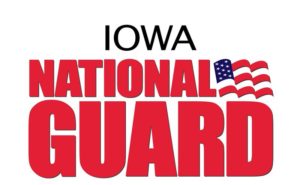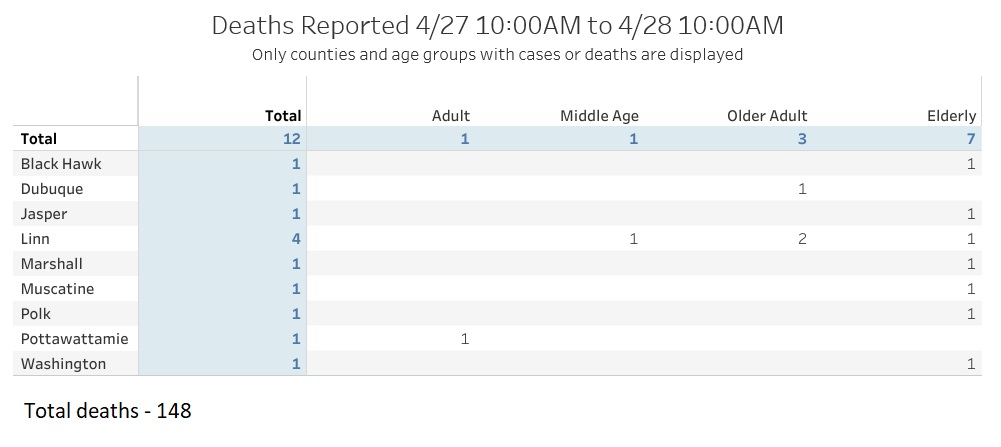 Iowa National Guard soldiers and airmen have assumed a new role in the state’s response to the COVID-19 pandemic. The job of ferrying personal protective equipment to destinations all over the state is mostly finished, now that the PPE supply chain has opened up and healthcare providers are again able to secure PPE on their own.
Iowa National Guard soldiers and airmen have assumed a new role in the state’s response to the COVID-19 pandemic. The job of ferrying personal protective equipment to destinations all over the state is mostly finished, now that the PPE supply chain has opened up and healthcare providers are again able to secure PPE on their own.
Soldiers have changed their transportation mission to taking test kits to testing sites and then taking completed tests to the state hygienic lab in Iowa City. They’re providing administrative and logistical support for the Test Iowa sites, and they’re continuing to support the six Regional Medical Coordination Centers.
Starting this week, Guard members are staffing COVID-19 call centers in Sioux City, Cedar Rapids and Camp Dodge in Johnston. Adjutant General Ben Corell said at Gov Reynolds’ daily press briefing April 29 that 150 soldiers and airmen have been “thoroughly trained by public health professionals to gather and properly handle personal information required to determine potential COVID-19 exposure.”
They’ll help the Iowa Department of Public Health with contact persons who have tested positive to the virus to identify other people who may have been exposed and locations the positive person has been. One hundred fifty Guard members have been trained for the mission.
Guard members will also start this week providing support to food banks. Twenty-five Guard members will support six regional food bank networks, helping unload trucks, sort food into carts, and assist with boxing, sorting and distribution of food.
“We’re Iowans helping Iowans. We’re neighbors helping neighbors. We’re honored to support the people of Iowa during this challenging time,” Corell said.
The first question during the Q & A put Gov Reynolds on the defensive over her decision to ease mitigation efforts in 77 counties effective Friday. Reynolds and the IDPH several weeks ago asked the University of Iowa to do statistical modeling to predict the course of the pandemic in Iowa.
Although a full report of the model has not been issued, a white paper sent to the IDPH and the governor from the UI College of Public Health last week said that although there is evidence that social distancing has slowed infection and mortality rates, Iowa has not yet reached is peak. The report concluded that prevention measures should remain in place, and that without such measures being continued, a second wave of infections is likely.
Reynolds was asked why she didn’t leave mitigation in place in all 99 counties for at least another two weeks. She answered that the mitigation efforts put in place, and the way Iowans responded, allowed the epi curve to flatten and the healthcare system was not overwhelmed. “On a daily basis we’re learning more… We’re able to look at things on a case-by-case, real-time basis. It makes sense to start to loosen up in areas that have seen little to no virus activity, and to do it in a responsible manner.”
Reynolds said IDPH will monitor the situation. “We’re going to re-evaluate every single day and make informed decisions to protect the health of Iowans but also the livelihood of Iowans as well,” she said.
When the journalist asked again if two more weeks would have been “an unreasonable amount of time to keep things down a little longer,” Reynolds answered, “I said we’d look again at May 15. If I didn’t think we were ready I wouldn’t have moved forward.”
She said she had a conversation with University of Iowa Hospitals and Clinics president Surech Gunasekeran (she incorrectly identified him as president of the University), who made a case for ending the ban on elective procedures. “That also came out of the University of Iowa and was a recommendation based on the numbers, on what they were seeing with vents and ICU beds and their ability to manage COVID-19… We did have the capacity to very carefully start to move in to opening elective procedures.
“That is how we’re going to have to manage COVID-19 as we move forward. I didn’t just rip the Band-Aid off or flip the light switch. We’re doing it in a reasonable, phased in approach,” Reynold said.
Reynolds was next asked if she planned to attend a church service or a farmers market this weekend. She said she didn’t know, “but isn’t it a wonderful thing? Isn’t this great? Iowans are going to decide. Churches are going to decide. It’s not a mandate. It’s an option.”
The next journalist asked what parts of the UI white paper the Reynolds team disagreed with. IDPH deputy director Sarah Reisetter replied, “A model is a model. It’s a forecast, an estimate of what we might see.” She said that social distancing is part of the guidance for reopening businesses, and that Iowans who are most vulnerable should continue to stay home.
In recent days, Woodbury County has seen a large spike in cases. Woodbury now has 728 cases, the third highest in the state. (Black Hawk leads with 1,082, followed by Polk at 905 cases. Linn and Johnson counties were the first counties with a high incidence; they’re now at 652 and 453, respectively.) Woodbury is the only western Iowa county that will not see restrictions loosened May 1.
A Carroll County journalist asked what is being done and what conversations have been held with Nebraska authorities. Reynolds said she hopes to open a Test Iowa site there next week, or possibly this weekend.
She said IDPH is working with hospitals and long term care facilities in the area. Contact tracing will follow positive cases. “The information we’re able to see in real-time and on a daily basis really can help us monitor that. If we start to see some spread into the neighboring counties, then we can get in there sooner rather than later, hopefully do contact tracing, and contain it to avoid some of the bigger spikes we’re seeing in some of the larger counties,” Reynolds said.
(Crawford County, with 21 cases to date, lies between Carroll and Woodbury counties. Carroll County has identified only one case of COVID-19, and that case was directly linked to international travel before community spread was taking place.)
Reynolds opened the press briefing with statistics from the IDPH. During the 24 hours preceding 10 am Tuesday, IDPH was notified of 467 additional positive cases for a total of 6,843 positive cases. There have been an additional 1,047 negative tests for a total of 34,494 negative tests to date, which includes testing reported by the State Hygienic Lab and other labs.
According to IDPH, an additional 12 deaths were also reported, 323 are currently hospitalized, and 2,428 Iowans have recovered. At this time, 1 in 76 Iowans have already been tested.
An additional 12 deaths were reported.
